Tire balancing is a tune-up for your wheel-tire set. It makes sure that weight is evenly distributed around the entire circumference of the unit. The common symptoms of out-of-balance tires are uneven and faster tread wear, poor fuel economy, and vibration in the steering wheel, the floorboard or the seat that gets worse at faster speeds.
When all areas of the wheel-tire unit are as equal in weight as possible, the tire will roll smoothly. This helps it wear evenly, for longest life. Balancing also contributes to ride comfort: Imbalanced tires will wobble or hop up and down, which causes vibration. If a front tire isn’t properly balanced you’ll likely feel vibration in the steering wheel. If the problem is in the rear the tremor will be noticeable in the seat or floor.
Imbalanced tires are easily corrected, but the work is precise. It’s done by attaching small weights, just fractions of ounces, to the wheel.
Everyday wear on tires will contribute to imbalance. Normal manufacturing imperfections are also a cause: Tires and wheels don’t have precisely equal weight distribution. They’ll be slightly heavier in some spots.
Just half an ounce in weight difference is enough to cause a vibration when you’re driving.
Rebalancing is done in a tire shop by putting the wheel-tire unit on a tire balancing machine that takes measurements to pinpoint lighter or heavier areas and making adjustments to account for these weight differences. The best time to get it done is when tires are being rotated, both for convenience and because you might have a tire out of balance on the rear of the vehicle and won’t feel it until it is moved to the front.
Here’s how it’s done:
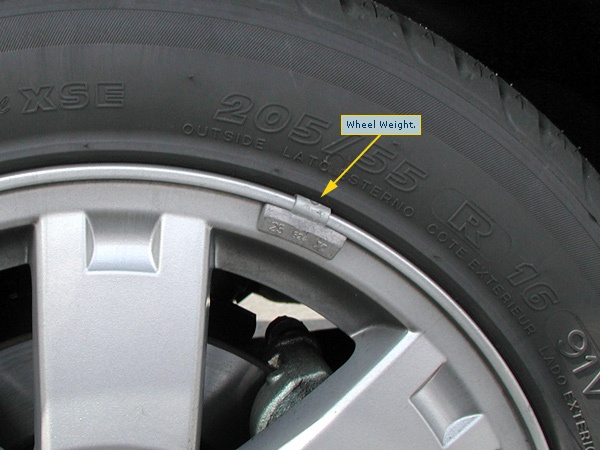
Though both should be part of regular auto maintenance, balancing isn’t the same as getting an alignment. Wheel alignment corrects the angles of the tires so they travel in the same direction and make contact with the road properly. Alignment reduces uneven tire wear and extends the life of your tires. Oftentimes tire balancing and alignment are perceived to be the same thing, but are not.
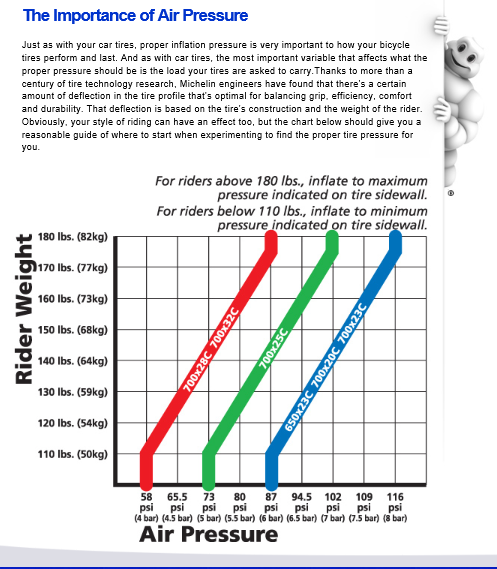
Tire balancing and rotation are often done at the same time, but they aren’t the same service. Tire rotation is when a vehicle’s front and rear wheels are switched to even out tread wear between them. Since both require removing each wheel, it’s convenient to do them at the same time.
Vibration when underway could be caused by an imbalanced tire and wheel assembly or something else — a bent wheel, a damaged tire (which won’t be fixed by balancing), worn suspension parts or other aging components. If you feel a vibration, don’t wait to get it diagnosed. You’ll head off other problems — and enjoy a smoother ride — when your tires are well balanced.
Schedule an Appointment
Imbalance is one of the situations many people don’t want to encounter while driving because it will make them have a bad driving experience.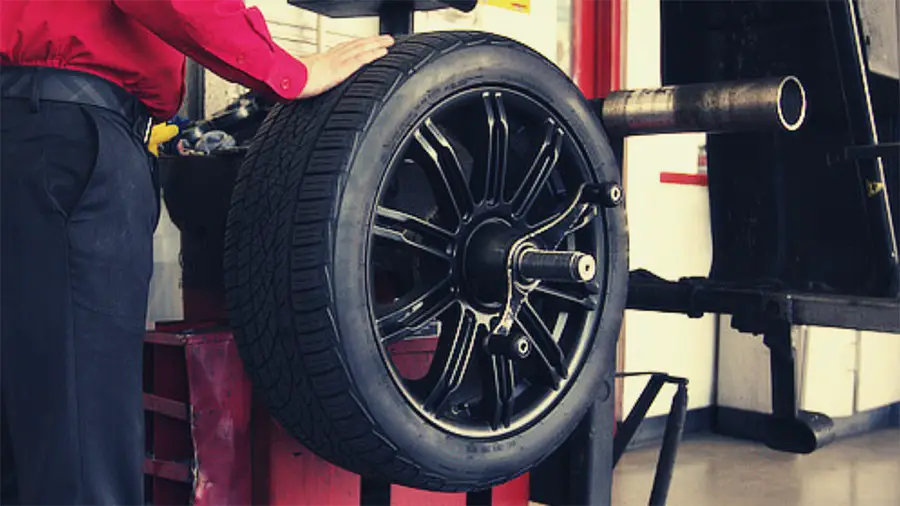 So, how to tell which tire is out of balance?
So, how to tell which tire is out of balance?
In fact, many ways will help you realize this situation, such as:
The following article will guide you in detailed information. Let’s follow along!
Unbalanced Tires SymptomsSymptoms Of UnbalanceOne of the first signs that your new wheels are out of balance is that the car will shake very vigorously, especially when traveling at high speed. If not adjusted in time, these unbalanced wheels can affect you and even cause an accident.
Rapidly running out of fuel is the second sign of an unbalanced one. You will notice a sudden drop in energy as the engine has to try to use more power to move the vehicle.
In addition, you may also hear humming or hissing noises, and their levels will increase as the speed increases. It will reduce your driving experience.
It will reduce your driving experience.
Besides, if you notice that the car is tilted or the wheels are worn a lot, you should quickly bring the vehicle to the shop and have it repaired.
Finally, the sign that they are out of balance is due to the vibration of the steering wheel. The steering wheel is the part that needs stability to control the vehicle. If an imbalance affects the steering wheel, you will notice a slight vibration.
Causes Of Unbalanced TiresWhy does imbalance happen? There are many causes of this problem. It can be internal factors, or it can also be external influences.
Internal factors such as the car’s suspension system, due to uneven weight distribution on all four tires, cause this imbalance.
Car’s suspension systemHowever, most of the causes of loss of balance will be due to the way the vehicle is controlled. Several bad driver habits can contribute to severe tire wear. Their constant stopping may reduce the weight of a part of the tire that also causes this imbalance.
In addition, due to driving techniques or the terrain of the road, many potholes can also cause your rims to fall off, losing balance.
The terrain of the roadWeather is also one of the reasons why your car is out of balance. When it’s cold weather, sudden low temperatures can cause the tires to be under-inflated and reduce the elasticity of the wheels when in contact with the road surface.
Conversely, if you inflate your car too much, you will also cause the tires to wear abnormally and make them unbalanced.
How To Help Balance Tires?After knowing the causes and signs of an unbalanced one, the next thing you need to do is to fix it.
The first step you need to take is to double-check to see what is causing the imbalance. You should put the car on a flat surface and observe which side it tilts. For more convenience, if you want to perform other tasks such as wheel alignment, you can use a 4-post car lift.
Once you know which side it leans on, it’s up to you to start addressing it.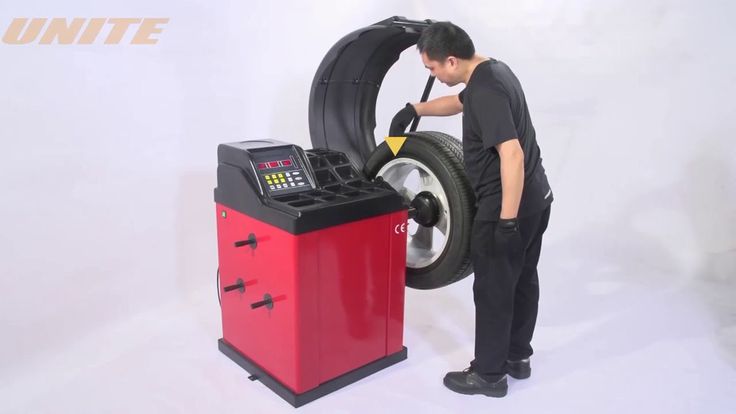
If these are simple errors, you can completely do the repairs yourself at home. For example, the cause of unbalance is a flat wheel.
You will only need to re-inflate to the tire’s recommended limit. Because as mentioned above, over-inflated tires can cause wear to happen faster.
For more tips to handle it at home, check out this video below!
But if your car needs to be realigned, you should ask a professional to handle it for you because they will require quite complicated operations.
If your rim has come off due to an impact, you should have it reattached or replaced by a technician. You can go to professional car repair shops or the place where you bought your car for a warranty.
Repair shopsWhy Balance Tires?Ominous signs can occur if your vehicle is not balanced with tires. On the contrary, if your tires are balanced, you will have a very smooth ride without discomfort or any problems at all.
On the contrary, if your tires are balanced, you will have a very smooth ride without discomfort or any problems at all.
In fact, the problem of wear is something you will never avoid when moving. Therefore, experts recommend regularly rotating the wheel to limit this. The uneven wear of the tires also leads to a difference in weight across the circumference of the tire.
If regularly balanced tires are combined with a consistent tire rotation process, they will last longer. So, you should prevent an unbalanced tire from happening instead of spending a lot of money on replacing it.
FAQsIn fact, you can still drive when the wheels are out of balance, but it will be pretty complex and annoying for you when the noise is emitted, or the car shakes. However, if this condition persists, it can seriously affect your driving and even cause an accident.
As we’ve already mentioned, if you don’t fix your tire imbalance, you’ll run into problems and possibly endanger yourself. Unbalanced tires will not correct themselves if you do not intervene in them. Do not prolong this situation if you do not want to spend a large amount of money to fix it.
Unbalanced tires will not correct themselves if you do not intervene in them. Do not prolong this situation if you do not want to spend a large amount of money to fix it.
Tire wear is something you won’t be able to avoid. If you do not regularly check and adjust it, it is straightforward for your car to lose balance. Add to that your driving habits that can also cause imbalance. The road, if there are many potholes, will also cause this problem.
ConclusionThis article has helped you answer the question: “How to tell which tire is out of balance?” Many reasons can lead to this situation, but if you focus on observing closely and fixing it in time, you will save a lot of money.
Thank you for taking the time to read the article!
This post was last updated on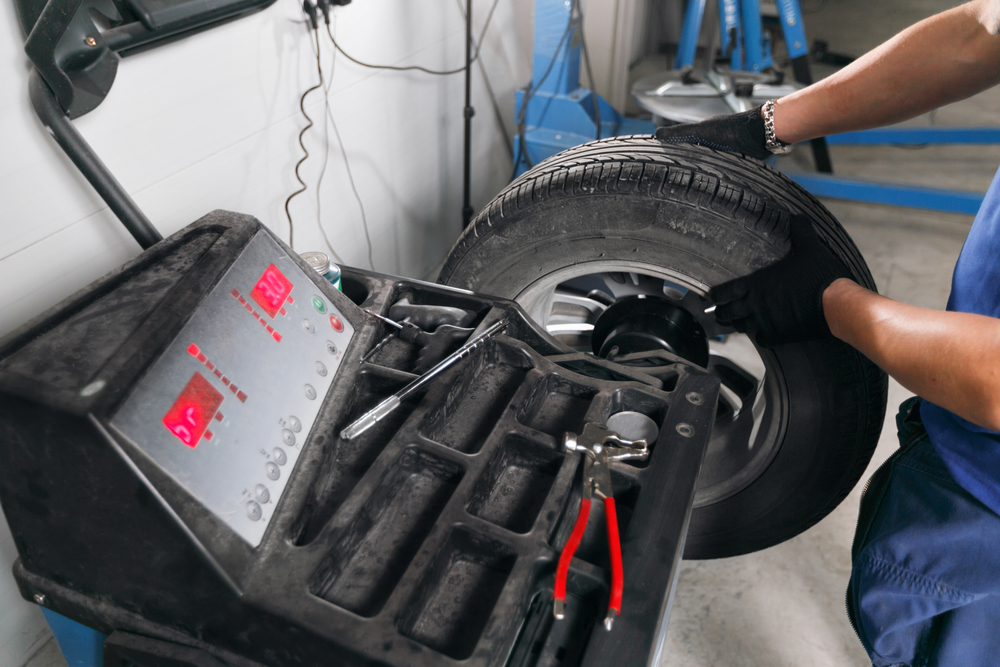 com
com The main indicator of a problem with the wheels is the beating of the steering column at high speeds or during fast acceleration. Violated maneuverability, the car constantly leads in one direction. These signs of improper wheel balancing lead to premature wear of other parts of the machine - suspension elements, universal joint and steering column.
Incorrect balancing of the machine can cause damage to equipment and machinery. The reasons for the imbalance are different - from the quality of the tires to the violation of the installation rules. The main signs of poor wheel balancing are: beating, vibrations and extraneous noises when driving.
A uniformly rotating disk has an axis of symmetry coinciding with the center of gravity and located at the same distance from the middle point of the circle. These characteristics are satisfied by the balanced wheels of the car. To avoid breakdowns, it is necessary to regularly check the uniform rotation of the discs assembled with tires on the stand.
Types of incorrect wheel balancing:
Types of wheel imbalance
Symptoms of signs of incorrect wheel balance - when the body and steering column vibrate on the road in motion. The car pulls in one direction, a rumble is heard when the wheels rotate, the tread wears unevenly.
If there is extraneous noise and vibration transmitted through the body and steering column of the machine, it is necessary to carry out unscheduled maintenance.
Signs of incorrect wheel balance may be due to vehicle suspension problems. Therefore, before tire fitting, it is necessary to check other possible causes that disrupt the smooth running of the car.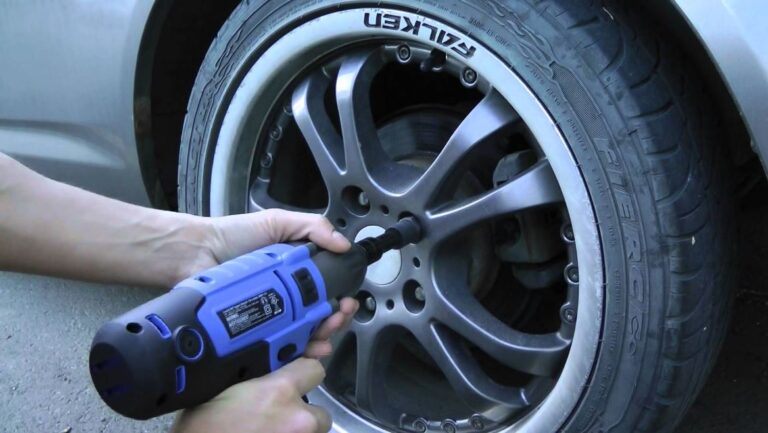
Typical signs of poor wheel balance:
Wheel imbalance disrupts steering
When checking the wheel balance, it is necessary to test the wheels on the stand. Out-of-roundness or deformation can lead to runout even after quality tire work has been done.
Changing the shoes of a car in a car service is sometimes carried out in violation of technology. This is usually a consequence of the low qualification of the performer or haste.
This is usually a consequence of the low qualification of the performer or haste.
The main signs of poor wheel balancing as a result of erroneous actions:
The yellow mark must line up with the nipple hole.
The balancing machine must be calibrated and securely fastened. On alloy wheels, weights are glued to a degreased surface. At the stand, the values of the indicators should be zero. The mass of weights on one side is not more than 60 grams. During installation, a torque wrench is used. Observe the correct tightening of the nuts - crosswise.
The main indicator of a problem with the wheels is the beating of the steering column at high speeds or during rapid acceleration. Violated maneuverability, the car constantly leads in one direction. These signs of improper wheel balancing lead to premature wear of other parts of the machine - suspension elements, universal joint and steering column.
The problem is usually found out when changing seasonal tires. Just changing tires is not enough. It is necessary to balance the disk assembly with the tire on the stand. Tire fitting equipment must be calibrated by a metrological organization.
Balancing stand
To check the balancing of the Gazelle, it is necessary to have a cone with a spacer. Drivers often do not pay attention to the imbalance of the rear axle, as this is not reflected in the steering column. But such a malfunction worsens maneuverability and stability on the road.
For tire fitting, a spacious room is usually provided, where there is a powerful power supply for the machine and a large supply of consumables.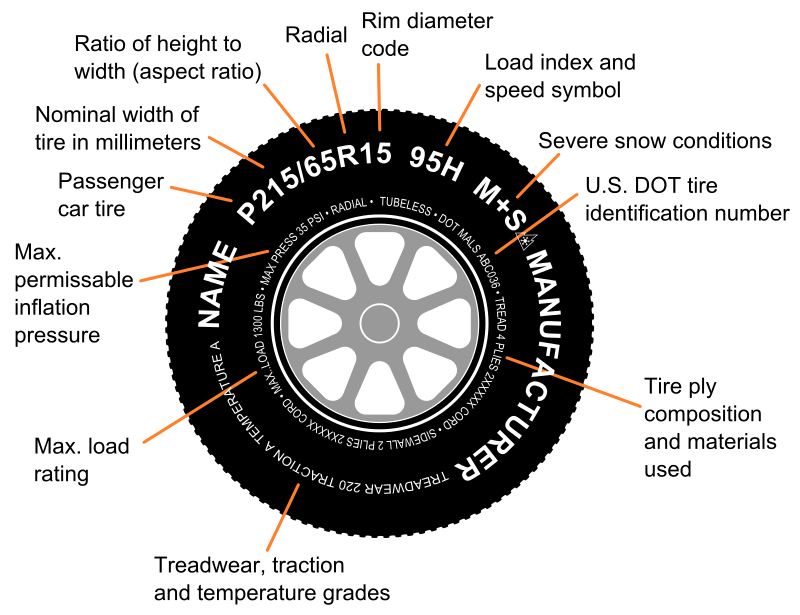 Most drivers cannot accommodate complex equipment in the garage on their own. Therefore, in order to check the wheel balance on a car with your own hands for free, you need to use improvised means.
Most drivers cannot accommodate complex equipment in the garage on their own. Therefore, in order to check the wheel balance on a car with your own hands for free, you need to use improvised means.
Sequence:
Wheel balance check
If all the marks are in one area, these are signs of incorrect wheel balance.
Independent free methods can only determine static imbalance. And for dynamic, the accuracy of tire fitting equipment is required.
When the indicators are checked by the drivers themselves at home, diagnostic errors are possible due to dirt on the tires, uneven bolt tightening and disk deformation.
The condition for maintaining the car in good condition and comfortable driving is regular maintenance. Part of this procedure is running gear diagnostics.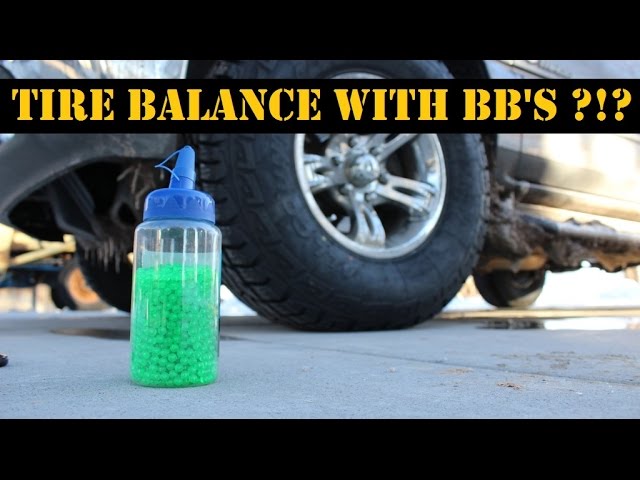 If the signs of wheel balancing indicate possible problems, you need to fix the problem on a special stand. Radial and end runout of the disc when the car is moving can lead to serious damage.
If the signs of wheel balancing indicate possible problems, you need to fix the problem on a special stand. Radial and end runout of the disc when the car is moving can lead to serious damage.
See also: Repair of electric steering racks, replacement of the motor and sensor
Consequences of incorrect balancing:
Unbalanced wheels in motion create large shock loads, which naturally leads to vehicle malfunction and expensive repairs.
You can use our unique PHOTOS, when you specify an active link - https://avtoshark. com/
com/
wheel balancingbalance wheels with your own handscheck the balance
0
Save article:
In this article:
Each car owner understands why wheel balancing is needed and what will happen if imbalance appears. However, not everyone can determine if the car wheels are balanced, how much more you can ride them and when you need to visit a tire shop. We understand what are the signs of an unbalanced wheel and how to fix this problem.
Unfortunately, many motorists are negligent about the balancing procedure. You shouldn't do that. After all, the “well-being” of your car depends on how well this procedure is performed.
Since the car wheel is spinning, it must have:
Wheel balancing is a procedure that allows you to minimize imbalance as much as possible. It is performed as follows: special granules are added to the rim, which are attracted to the rubber surface. Thanks to this balancing, signs of wheel imbalance are eliminated.
Only when the signs of wheel imbalance are eliminated, you can be sure that driving a car will not only be comfortable, but also safe. If balancing is carried out from time to time, it is possible to prevent the occurrence of such unpleasant consequences of unbalance as the failure of suspension elements: struts, steering gear and bearings.
Wheel imbalance is divided into 2 types:
 The distribution around the circumference of the mass is uneven. A vertically directed vibration can be seen. The result is uneven tire wear. Driving such a car is uncomfortable and unsafe.
The distribution around the circumference of the mass is uneven. A vertically directed vibration can be seen. The result is uneven tire wear. Driving such a car is uncomfortable and unsafe. There is also a combined imbalance. In this case, there is a displacement and inclination relative to each other of the axes of inertia and gravity of the wheel.
Photo: Shutterstock
Why do signs of imbalance occur:
Read also
"What is detailing: types of work and criteria for choosing a center"
Read more
How strong the imbalance will be depends on the condition of the tires. After all, the rubber structure is complex and uneven, all this affects the accuracy of centering.
After all, the rubber structure is complex and uneven, all this affects the accuracy of centering.
What is the most common sign of imbalance? Of course it's vibration. When there is an imbalance, the vibration goes from the undercarriage of the car to the passenger compartment. The greater the imbalance, the worse the road and the higher the speed of the car, the stronger the vibration will be. Vibrating movements are different. For example, you may hear a slight noise, or the car may shake so much that it becomes uncomfortable to drive.
To find out which car wheel is unbalanced, it will turn out if you distinguish between different types of vibrations. For example, you are driving a car and most of all you feel the vibrating vibrations that go to the steering wheel. So, there is an imbalance in the front wheels. When the rear wheels are unbalanced, unpleasant shaking will be felt by passengers who ride behind.
Photo: Shutterstock
Why does wheel imbalance occur and what are its symptoms? During spinning, certain areas of the tire experience more pressure than other areas.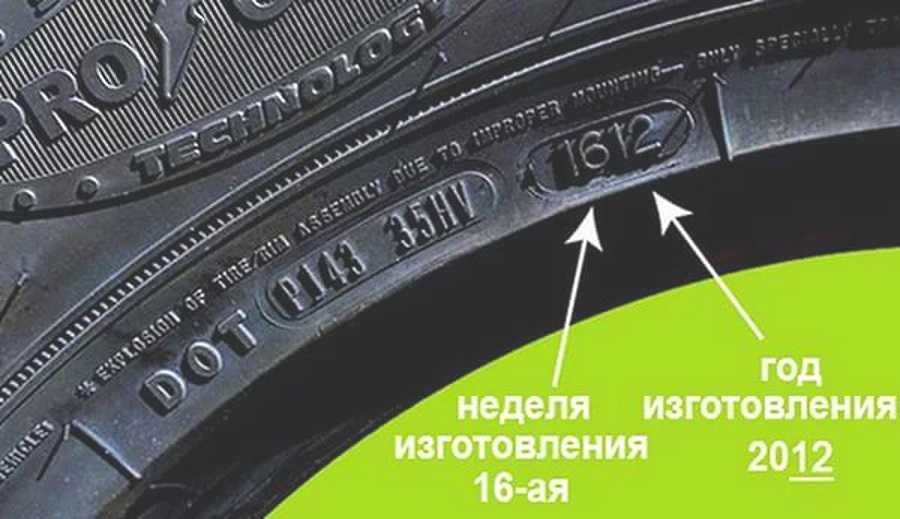 Due to the fact that the car wheel moves unevenly, vibrating vibrations occur. Areas of the tire that are subjected to more pressure wear out quickly and become fragile. If there are signs of an imbalance in the wheel, which has worn out in certain places, the rubber will begin to bleed air, and you will have to constantly pump up the tires.
Due to the fact that the car wheel moves unevenly, vibrating vibrations occur. Areas of the tire that are subjected to more pressure wear out quickly and become fragile. If there are signs of an imbalance in the wheel, which has worn out in certain places, the rubber will begin to bleed air, and you will have to constantly pump up the tires.
What other signs of imbalance are there? For example, you notice that your car is suddenly using more fuel. It is most likely due to imbalance. The stronger it is, the more fuel the car consumes. This is especially noticeable when you are driving at high speed.
What can happen if you ignore the signs of imbalance:
The reason for such unpleasant consequences is the vibrating vibrations that arise due to imbalance and affect the car.
Note! If you notice steering wheel wobble, it may not only be a sign of imbalance. It hits the steering wheel if the disk is dented, hernias appear on the tire, the cord is damaged, and the like. However, if the wobble occurs only when you increase speed, then this is a 100% sign of a front wheel imbalance. In this case, it does not matter at all whether the car is rear-wheel drive or front-wheel drive. If there is an imbalance of the rear wheels, then such a sign as the beating of the steering wheel does not appear.
Most often, signs of an unbalanced wheel are observed when changing winter tires to summer tires (or vice versa). Car owners do not think about what equipment is used for balancing, whether an experienced master. But the quality of the procedure depends on this. For example, an imbalance may appear after 200–300 km of run if the balancing specialist has not washed the rubber. Pieces of dirt will fall off and you will again see signs of wheel imbalance.
If a poor quality weight was used, steering wheel wobble may occur. Indeed, under the action of centrifugal force, the weight will come off, it will begin to hit the steering wheel.
Photo: Shutterstock
How to detect signs of imbalance? Raise the machine with a jack, and then install a balanced wheel and check. Then, by following a few simple steps, you will find signs of an unbalanced wheel, if any.
See also
"Car phone holders: which one is better"
More details
Chalk marks are not collected at one point, but are scattered throughout the tire? There are no signs of imbalance, and there is no need to spend money on balancing.
When you have one set of rims for both winter and summer, then you will have to balance it. Otherwise, there will be signs of imbalance. Only those motorists who have 2 sets of rims can think about whether it is worth balancing: for winter and for summer.
Do you need wheel balancing after a seasonal tire change?
Let's take a look at the owner's manual for the vehicle. It should indicate that balancing must be performed every 10,000–15,000 kilometers. Is your seasonal mileage less? Then, theoretically, balancing is not required, except in the situations described below.
However, in reality, you need to focus on the "well-being" of the machine. Are there obvious signs of an unbalanced wheel, such as wobble in the steering wheel? So, you can do without balancing. It is not always possible to feel the beating of the rear wheels, but they are not affected as much. One way or another, knowing the signs of imbalance, you can determine whether you need to visit a tire shop.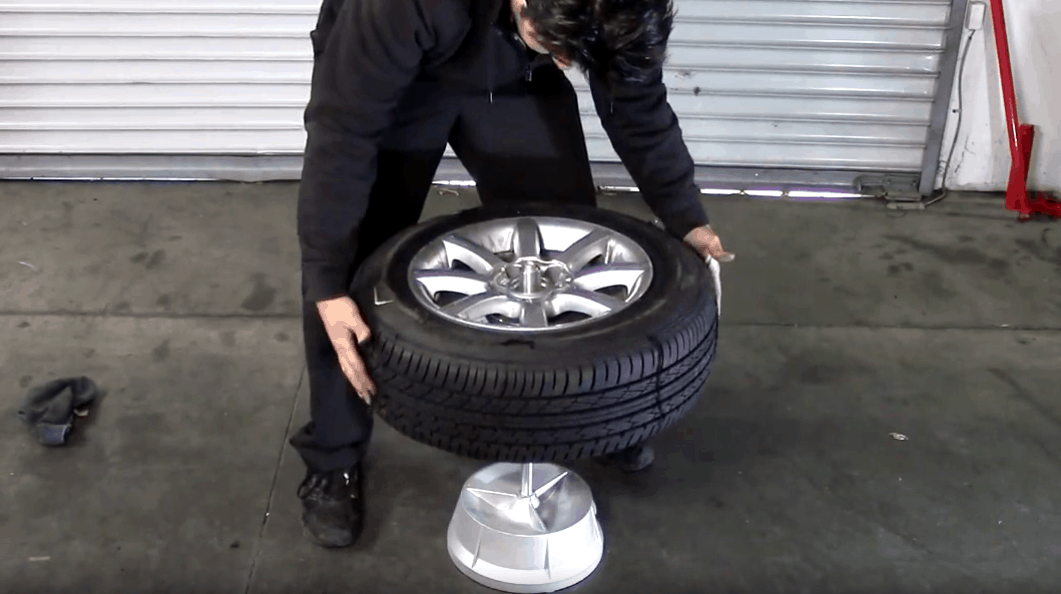
What if the car owner independently changes the wheels twice a year? Stick to the tips below. Install a new set of car wheels, ride them for a few days. During this time, the deformation on the rubber that occurred during storage will disappear. There are no signs of an unbalanced wheel, no vibrating vibrations, and does it matter if you are driving fast or slow? So no balancing is needed.
However, this procedure cannot be dispensed with if:
So, you found signs of an unbalanced wheel and went to a tire shop. How to determine that the master does his job poorly?
Most often, an unscrupulous master does not wash car wheels.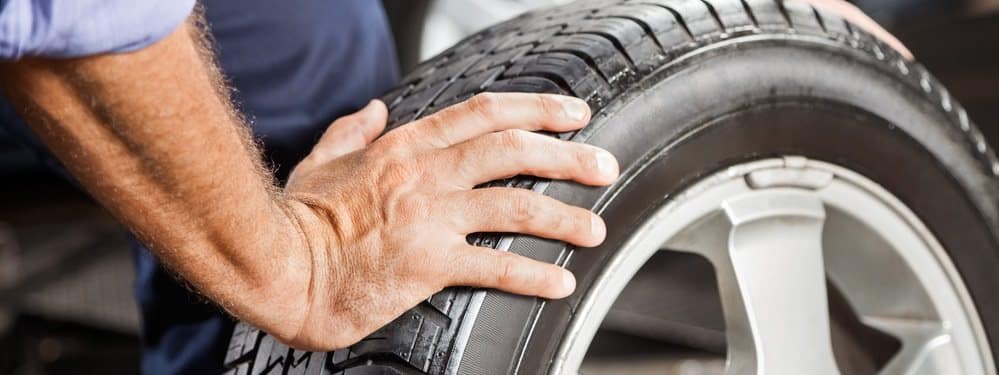 At first glance, it may seem that this procedure is not so important. But if there is dirt on the tires and rims, it will not work to balance them. Indeed, even a ten-gram piece of dirt on the wheel, a small pebble that has clogged into the rubber tread, can cause imbalance.
At first glance, it may seem that this procedure is not so important. But if there is dirt on the tires and rims, it will not work to balance them. Indeed, even a ten-gram piece of dirt on the wheel, a small pebble that has clogged into the rubber tread, can cause imbalance.
And when you drive at a speed of 100 kilometers per hour, the steering wheel will start to hit, and the suspension elements will experience an unforeseen load, eventually leading to destruction.
Popular articles
Chic, shine, beauty: how to remove scratches on a car with your own hands
9.12.2022
72
Without damage: how to reduce fuel consumption on a car
11/29/2022
117
How much do they pay for advertising on a car
11/25/2022
263
Best car tool kit
11/18/2022
224
What is in my name to you, or How to decipher the marking of engine oil
11/17/2022
188
Another reason why wheel imbalance can occur is that the wheel balancer is not positioned correctly. It can simply be placed in a trailer on a wooden surface. But such a machine must be attached with anchor bolts to a flat concrete floor. There should be no vibration. Otherwise, the master will not be able to perform high-quality balancing. You should not visit mobile tire shops, because there will be no benefit from such balancing.
It can simply be placed in a trailer on a wooden surface. But such a machine must be attached with anchor bolts to a flat concrete floor. There should be no vibration. Otherwise, the master will not be able to perform high-quality balancing. You should not visit mobile tire shops, because there will be no benefit from such balancing.
According to the rules, balancing equipment must be calibrated several times a season. However, in many tire shops, whose owners are not worried about the quality of the services provided, this procedure is not carried out. In addition, it is impossible to calibrate an expensive machine on your own. In order not to waste money on the work of a third-party specialist, sometimes calibration is not carried out.
If the rims are cast, then the balancing weights are usually glued.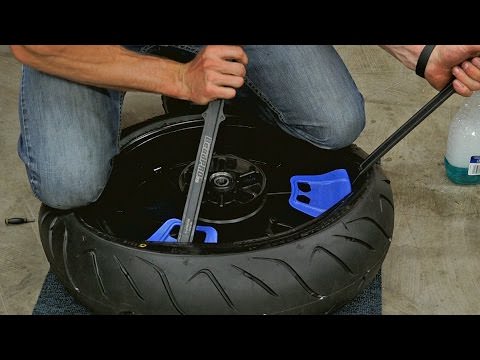 To prevent it from peeling off due to vibrations or moisture during a car wash, it is necessary to properly prepare both the weight and the disc. Wipe the disc with a degreasing agent, such as thinner, before sticking the weight. Moreover, the disk must be pre-cleaned of dirt. The area where the weight will be glued, and the load itself is heated with a building hair dryer.
To prevent it from peeling off due to vibrations or moisture during a car wash, it is necessary to properly prepare both the weight and the disc. Wipe the disc with a degreasing agent, such as thinner, before sticking the weight. Moreover, the disk must be pre-cleaned of dirt. The area where the weight will be glued, and the load itself is heated with a building hair dryer.
See also
How to charge your car battery correctly
Read more
This is the correct technology of work, if it is followed, then the weight will never come off, even if water gets on the wheel at a car wash. But, unfortunately, the technology of the procedure is often violated, so at car wash stations you can see a lot of weights that have come off.
The specialist is in a hurry or lazy, he tells you that nothing terrible will happen even if there is a 5 g imbalance.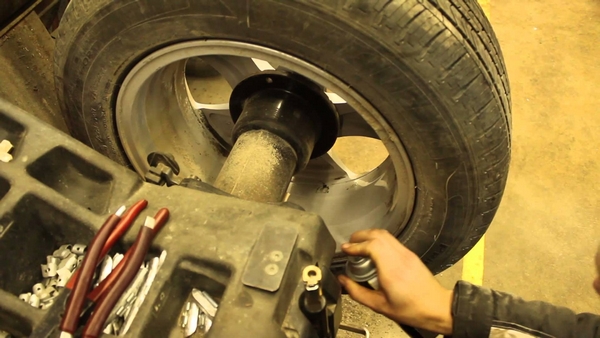 But when the disc is mounted on the car, there will be signs of imbalance. That is why it is important that after balancing on the monitor of the stand, zero indicators of the deviation of the balance indicators outside and inside the wheel are displayed.
But when the disc is mounted on the car, there will be signs of imbalance. That is why it is important that after balancing on the monitor of the stand, zero indicators of the deviation of the balance indicators outside and inside the wheel are displayed.
To achieve this result, you will have to peel off and re-stick the weights several times. Maybe the master will even disassemble and clean the inside of the wheel if there is water or dirt left. Or the disk is bent, in which case it needs to be straightened. In any case, there should be no errors. Even a minimal imbalance of 5 g will cause the steering wheel to be beating at high speed, the car will be less controlled, and the suspension elements will quickly fail.
Working with a wrench, the master spends less time and effort, but driving a car after such a service becomes unsafe. The fact is that a wrench can ruin the threads on studs, nuts and bolts.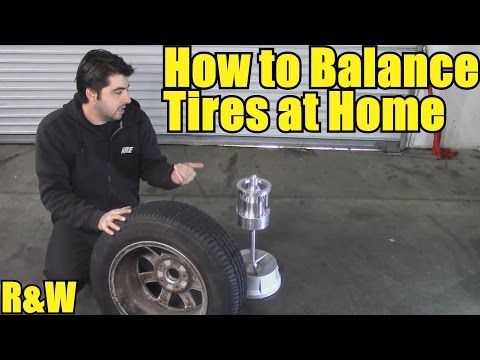 As a result, there is a threat to the life of the driver and passengers. If the specialist overtightens the nuts and bolts, the seat on the disc will warp, and you will again find signs of an unbalanced wheel.
As a result, there is a threat to the life of the driver and passengers. If the specialist overtightens the nuts and bolts, the seat on the disc will warp, and you will again find signs of an unbalanced wheel.
Even though the handyman can handle the wrench carefully, the bolt or nut will still be overtightened. And when you want to spin the wheel on the track, you can't do it. Only the latest tire centers use special wrenches, on which you can make the effort minimal. At the end of the work, the master uses a torque wrench to tighten the nuts to the required torque. Remember that with a wrench you can unscrew, not tighten the nuts.
In this case, the centering of the car wheel relative to the hub will be violated. As a result, signs of an unbalanced wheel will appear again. The hub, as well as the suspension elements, will experience increased loads. How not to knock down the center? To do this, tighten the nuts and bolts crosswise.
It often happens that when installing a wheel, the master tightens the nuts, focusing on his feelings and experience. Or use a wrench. Since the material of the discs is quite soft, due to the fact that the nuts are tightened unevenly, they become crooked, there are signs of imbalance.
How to tighten bolts and nuts on a wheel? A torque wrench is used to perform this procedure. With it, you can make a puff with the desired force, which differs depending on the make and model of the car. You can find out what the effort should be for your car in the vehicle operating instructions.
It is worth noting that the regular wheelbrace, which is located in the luggage compartment of your car, has such dimensions for a reason. The size of the wrench should be such that, by kneeling and pressing with your hands (without attaching a pipe to the wrench and without pressing hard on it), you can tighten the nuts on the wheel with the necessary force. And it does not matter whether a man or a woman performs this procedure.
And it does not matter whether a man or a woman performs this procedure.
In the same way, you should be able to unscrew the wheel with a regular wheel wrench. Of course, if at the tire fitting the specialist used a torque wrench and did not overtighten the nuts.
“Six months ago, a friend advised me (after balancing was done in the tire shop) to put the wheel on the machine and spin it. After such a check, I was shocked. Before removing the wheel, the indicators were “zero”, when the master removed the wheel, and I asked to put it back on, the indicators after balancing were 10–50 g! The unfortunate specialist realized too late what the purpose of this check was.
“I read in one authoritative car magazine that it is possible to balance the wheels with high quality only if adapters are used that play the role of a car hub.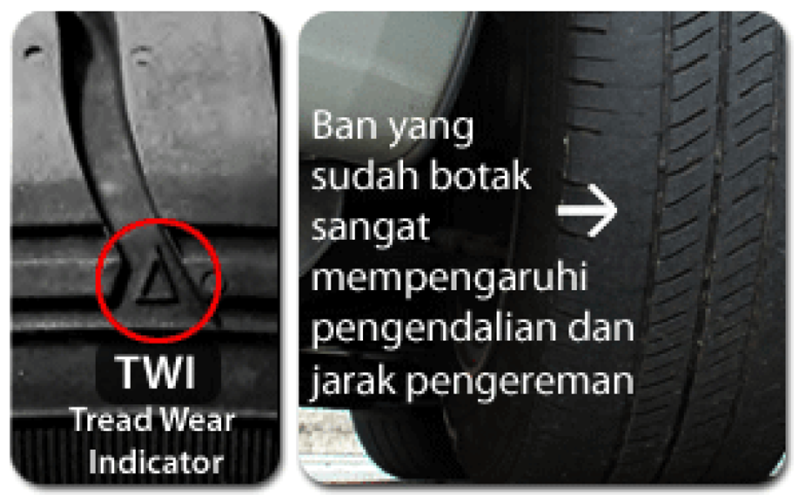 Thus, the disk is put on studs, and not on a cone.
Thus, the disk is put on studs, and not on a cone.
“In terms of wobble, my car has soft Yokohama tires, 18-inch rims, and the suspension is quite stiff. It doesn’t hit the steering wheel, even if the imbalance is 35 g. There is one sign of imbalance: when I brake smoothly at a speed of 100 km / h, then a beating occurs. But at a speed of 150 km / h, there is no beating when braking.
Read also
"Accident on carsharing: procedure and possible payments"
“Before you glue the weights, you need to set the tires on the disks according to the beating. When the wheel is spinning, the beating is visible in height. In this case, you need to rotate the rubber on the disk so that it beats less.